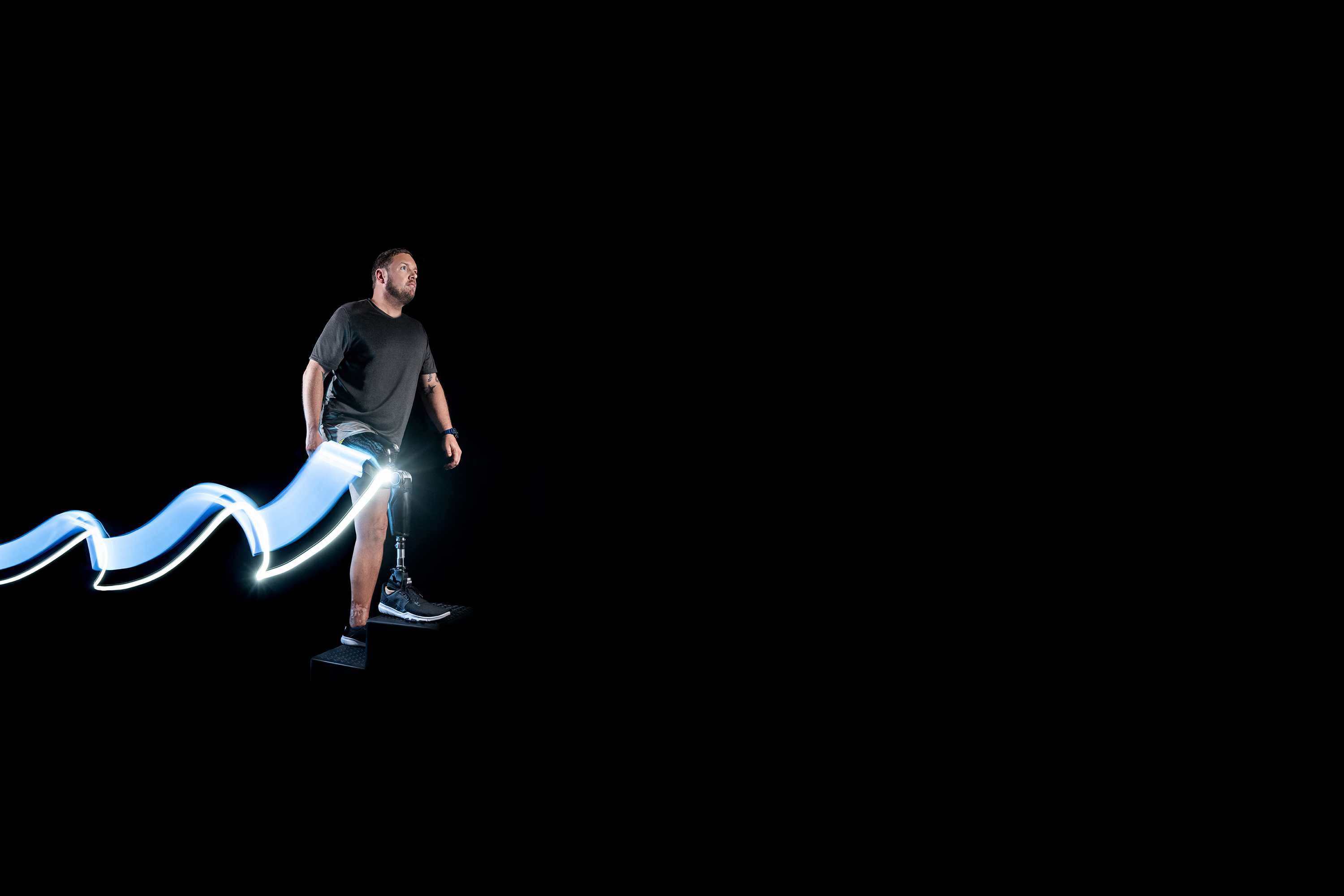WHY POWER?
When you are living with limb loss, power is a missing ingredient. Returning power to the mobility equation has demonstrated benefits we intuitively understand. With power, your steps get lighter, and your world expands.
REDUCE ENERGY COST
"Without certain muscles, people who use
a prosthesis expend 30-60% more energy
than those with intact limbs." ¹
POWER KNEE lowers the energy cost
of walking² as compared to regular
microprocessor knees.
IMPROVE SYMMETRY
For most people with limb difference,
it is challenging to walk symmetrically.
The negative results impact stamina every
day and lead to a greater risk of low back
pain and osteoarthritis.³⁻⁷
POWER KNEE improves symmetry* across
activities including walking, standing up,
and navigating stairs.²𝄒⁸⁻¹⁰
SHARING THE STORY OF
POWER KNEE
A passion for LIFE WITHOUT LIMITATIONS fuels our engineers, and the results of their 15-year commitment is changing lives.
References
- Genin JJ, Bastien GJ, Franck B, Detrembleur C, Willems PA. Effect of speed on the energy cost of walking in unilateral traumatic lower limb amputees. Eur. J. Appl. Physiol. 2008;103(6): 655
- Power Knee Mainstream Dynamic - Evaluation Report Synopsis, Össur hf, Steinþóra Jónsdóttir (2021). Data on file at Össur.
- Devan H, Tumilty S, Smith C. Physical activity and lower-back pain in persons with traumatic transfemoral amputation: a national cross-sectional survey. J Rehabil Res Dev 2012;49(10):1457-66.
- Devan H, Hendrick P, Ribeiro DC, Hale LA, Carman A. Asymmetrical movements of the lumbopelvic region: is this a potential mechanism for low back pain in people with lower limb amputation? Med. Hypotheses 2014;82(1):77–85.
- Matsumoto ME, Czerniecki JM, Shakir A, Suri P, Orendurff MS, Morgenroth DC. The relationship between lumbar lordosis angle and low back pain in individuals with transfemoral amputation. Prosthet and Orthot Int 2019 Apr;43(2):227-232. Epub 2018 Aug 18.
- Morgenroth DC, Orendurff MS, Shakir A, Segal A, Shofer J, Czerniecki JM . The relationship between lumbar spine kinematics during gait and low-back pain in transfemoral amputees. Am J Phys Med Rehab 2010;89(8):635–43.
- Harandi VJ, Ackland DC, Haddara R, Lizama LE, Graf M, Galea MP, Lee PV. Gait compensatory mechanisms in unilateral transfemoral amputees. Medical Engineering & Physics. 2020 Jan 7.
- Wolf, E. J., Everding, V. Q., Linberg, A. A., Czerniecki, J. M. & Gambel, C. J. M. Comparison of the Power Knee and C-Leg during step-up and sit-to-stand tasks. Gait Posture 38, 397–402 (2013).
- Highsmith, M. J. et al. Kinetic asymmetry in transfemoral amputees while performing sit to stand and stand to sit movements. Gait Posture 34, 86–91 (2011).
- Knut Lechler. Biomechanics of sit-to-stand and stand-to-sit movements in unilateral transfemoral amputees using powered and non-powered prosthetic knees - Congress Lecture [5038] Abstract [1459]. (2014).
References for our brochure can be found here.
